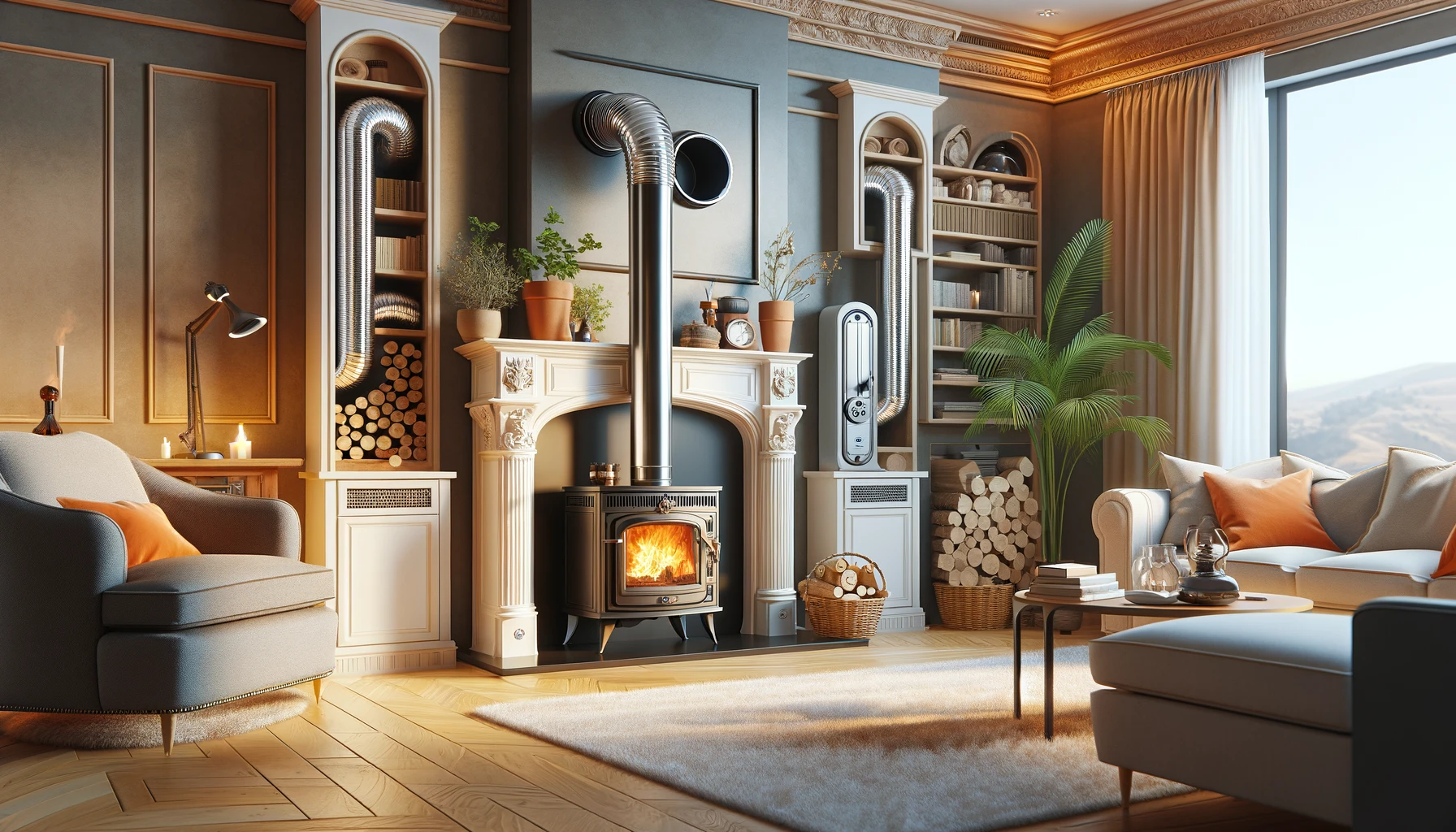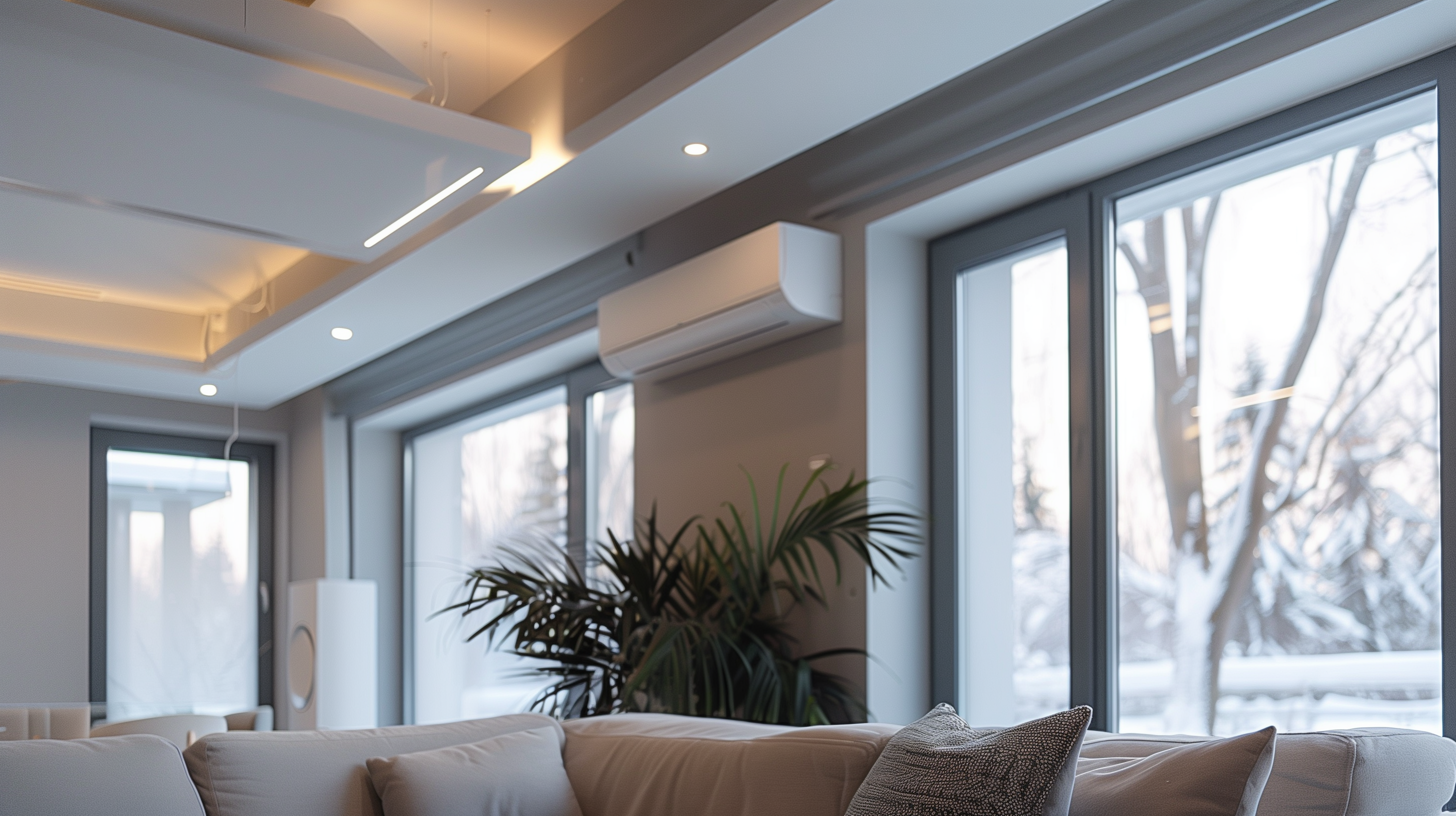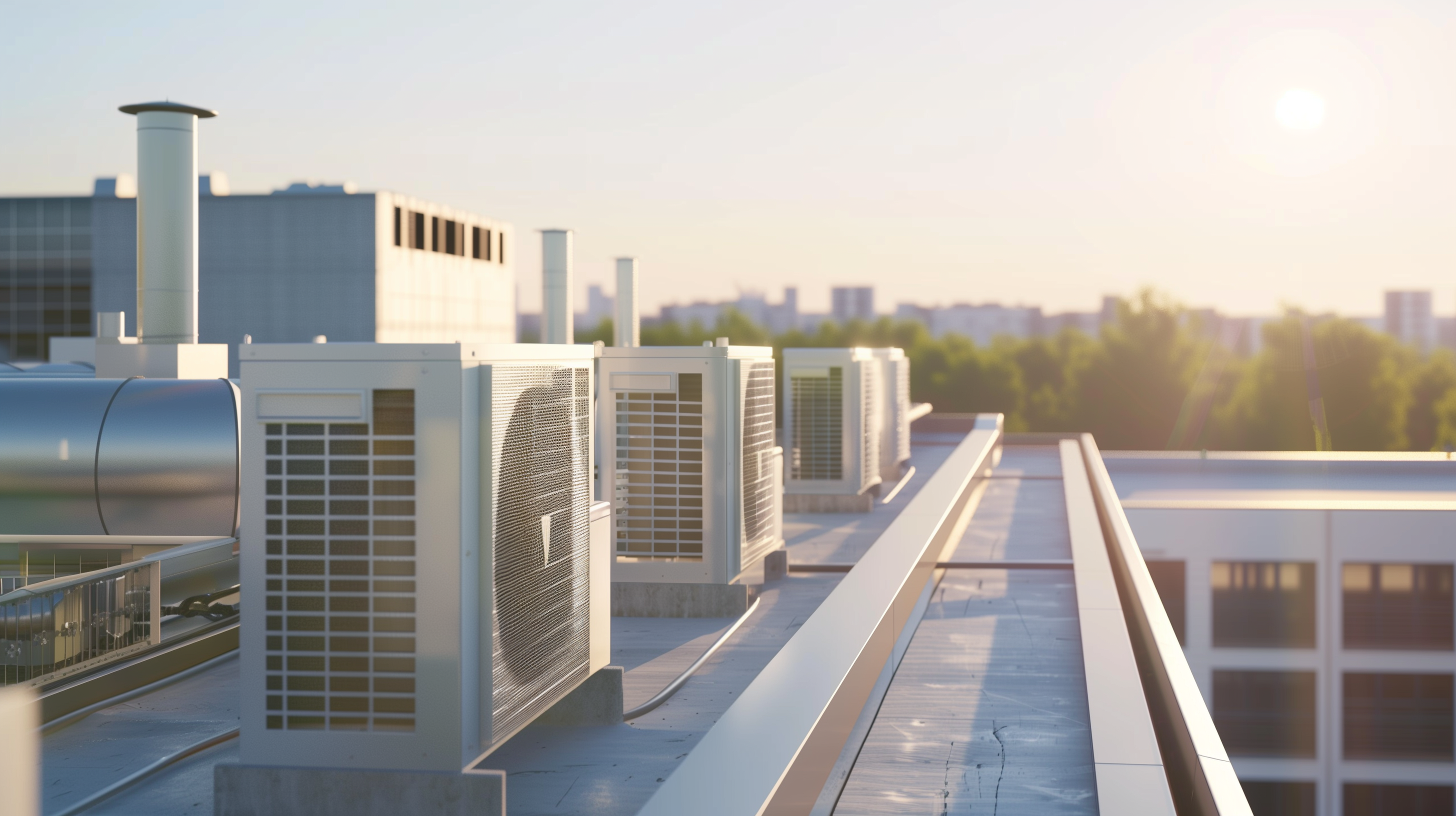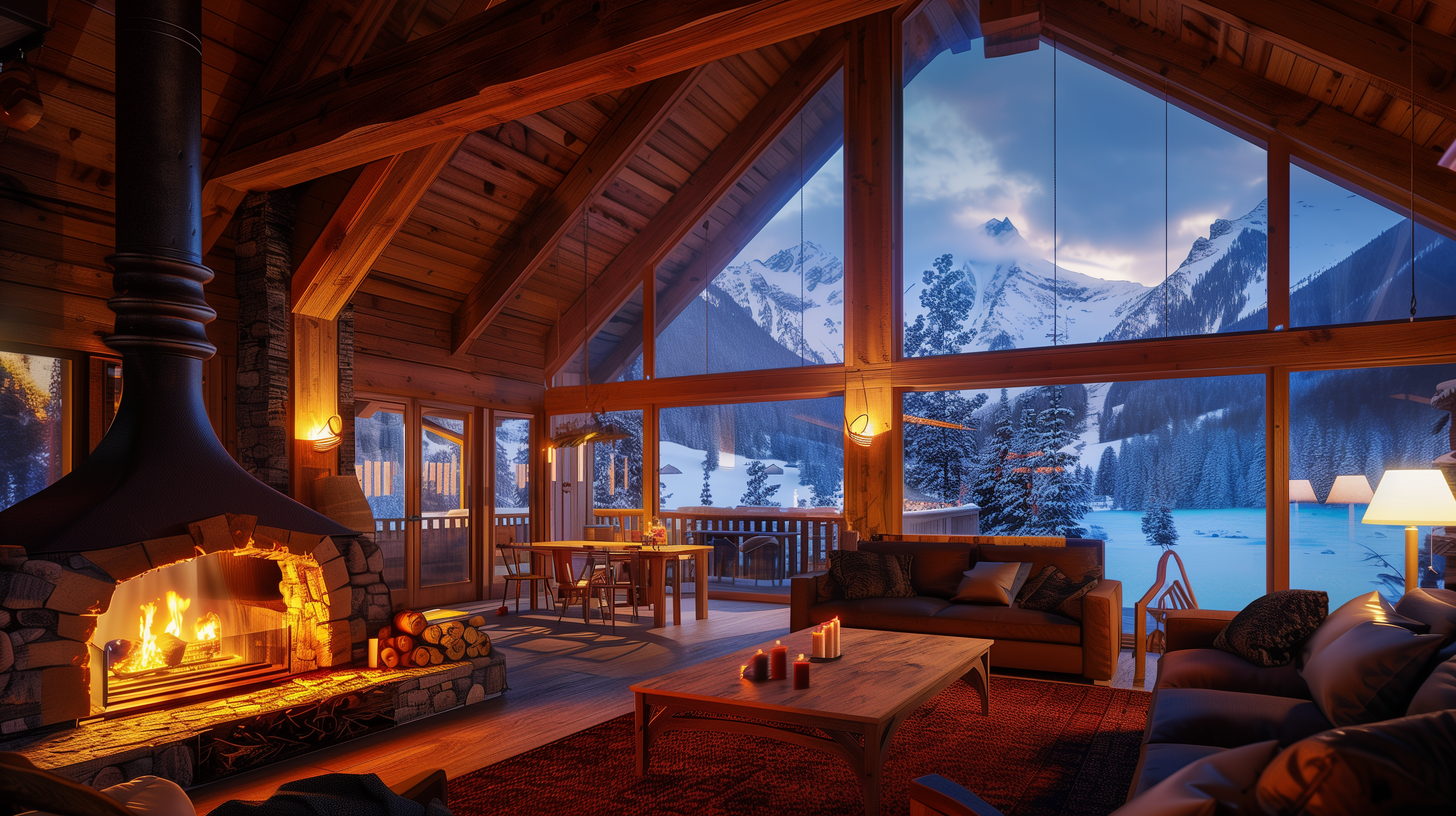Scope:
- Ensure proper ventilation for installed fireplaces.
- Conduct combustion safety testing to prevent backdrafting by exhaust fans.
- Meet applicable code requirements for all heating appliances.
Description:
- Fireplaces need adequate combustion air for safe and efficient operation.
- Different types of fireplaces: natural-draft, mechanically drafted, and direct-vent.
- Direct-vent fireplaces draw 100% combustion air from outdoors, unaffected by indoor air tightness.
- Mechanically drafted fireplaces use exhaust fans and may pull air from indoors, less affected by tightness.
- Natural-draft fireplaces can backdraft during maximum burn, especially with indoor exhaust fans.
Fireplaces and Wood Stove EPA Standards:
- EPA-Certified wood stoves meet emission requirements and use less firewood.
- EPA-Qualified appliances meet voluntary emission standards for cleaner burning.
- Improved combustion reduces indoor pollutants and benefits outdoor air quality.
Testing for Proper Ventilation:
- For natural-draft fireplaces, install a dedicated combustion air duct.
- Verify exhaust fan flow is ≤ 15 CFM per 100 ft2 of occupiable space.
- Ensure the chimney is clean and the damper is open for backup heat during power outages.
Climate Considerations:
- Secondary heat sources are crucial during winter weather or power outages.
- In colder climates, a secondary heat source is essential for resiliency.
- Choose a secondary heat source that doesn’t rely on the same fuel type as the primary one.
- Consider options like sealed wood-burning appliances, pellet stoves, or non-electric gas heaters.
- Ensure the appliance can operate without electricity.
Maintenance for Older Fireplaces:
- Inspect older open-hearth fireplaces for blockages.
- Clean chimney flues to remove debris and creosote buildup.
- Consider efficient sealed combustion inserts for older fireplaces.
Compliance with Codes and Standards
ENERGY STAR Single-Family New Homes, Version 3/3.1 (Rev. 11):
- HVAC System compliance.
- Combustion Appliances (Section 10).
- Section 10.2: Fireplaces must be mechanically drafted or direct-vented.
- Footnote 64: Definition of the pressure boundary.
- Footnote 65: Definition of direct-vent, mechanical draft, and natural draft systems.
- Footnote 67: Conditions for naturally drafted fireplaces within the home’s pressure boundary.
DOE Zero Energy Ready Home (Revision 07):
- Exhibit 1 Mandatory Requirements.
- Item 1 in Exhibit 1: Certification under ENERGY STAR Qualified Homes Program or ENERGY STAR Multifamily New Construction Program.
- Item 6 in Exhibit 1: Certification under EPA Indoor airPLUS.
EPA Indoor airPLUS (Revision 04):
- Compliance for Combustion Equipment Located in Conditioned Spaces (Section 5.1).
- Requirements for gas- and oil-fired furnaces, boilers, and water heaters.
- Conditions for naturally drafted equipment in Climate Zones 1-3.
- Compliance for fireplaces not mechanically drafted or direct-vented.
- Prohibition of unvented combustion space-heating or decorative appliances within conditioned space.
- Venting and combustion air requirements for all fuel-burning and space-heating appliances.
- Energy efficiency and emissions standards for fireplaces and heating appliances.
- Conditions for traditional masonry fireplaces and factory-built wood-burning fireplaces.
- Requirements for wood stove and fireplace inserts, pellet stoves, natural gas, and propane fireplaces.
- Note on conditioned spaces, including unfinished basements, crawlspaces, and attached garages.
EPA New Source Performance Standards:
- Federal emission standards established by EPA under Section 111 of the Clean Air Act.
2009 International Energy Conservation Code (IECC):
- Requirements for wood-burning fireplaces, including doors with gaskets and outdoor combustion air.
2012, 2015, 2018, and 2021 IECC:
- Requirements for wood-burning fireplaces, including tight-fitting flue dampers and outdoor combustion air.
- Retrofit requirements (2009, 2012, 2015, 2018, and 2021 IECC) for additions, alterations, renovations, or repairs.
- Chapter 5 controls alterations, repairs, additions, and change of occupancy of existing buildings and structures.
National Fire Protection Association (NFPA) 211: Standard for Chimneys, Fireplaces, Vents, and Solid Fuel-Burning Appliances, 2013 Edition:
- Guidelines for construction projects involving chimneys, fireplaces, venting systems, and solid fuel-burning appliances.
American Society of Heating, Refrigeration and Air Conditioning Engineers (ASHRAE) 62.2-2010, ASHRAE 62.2-2013, and ASHRAE 62.2-2016:
- Standards for ventilation and acceptable indoor air quality in low-rise residential buildings.
- Applies to spaces intended for human occupancy in single-family homes and multifamily homes (three stories or less), including manufactured and modular homes.
- Provides minimum acceptable requirements for mechanical and natural ventilation in these spaces.
Please note that for exact code language, it’s essential to refer to the applicable codes directly, and some may require purchase from the publisher
For immediate service or consultation, you may contact us at Allied Emergency Services, INC.
Contact Information:
- Phone: 1-800-792-0212
- Email: Info@AlliedEmergencyServices.com
- Location: Serving Illinois, Wisconsin, and Indiana with a focus on the greater Chicago area.
If you require immediate assistance or have specific questions, our human support is readily available to help you.
Disclaimer: This article is intended for informational purposes only. For professional advice, consult experts in the field.










